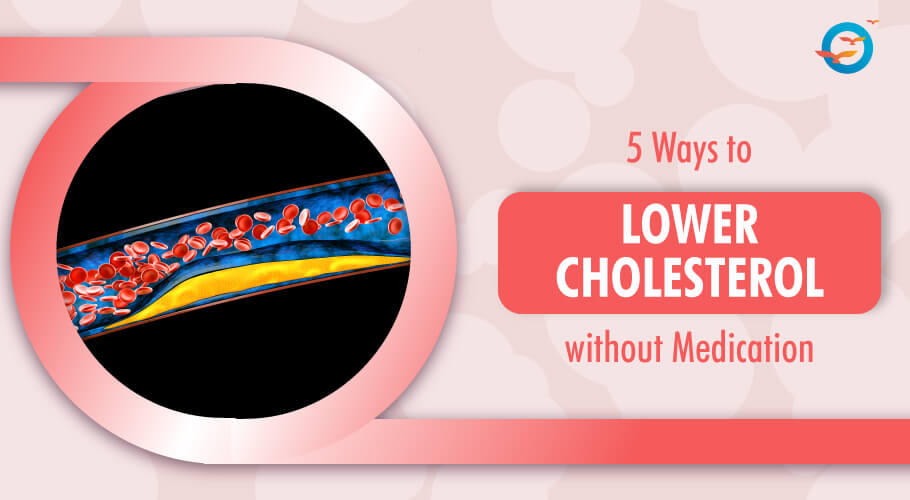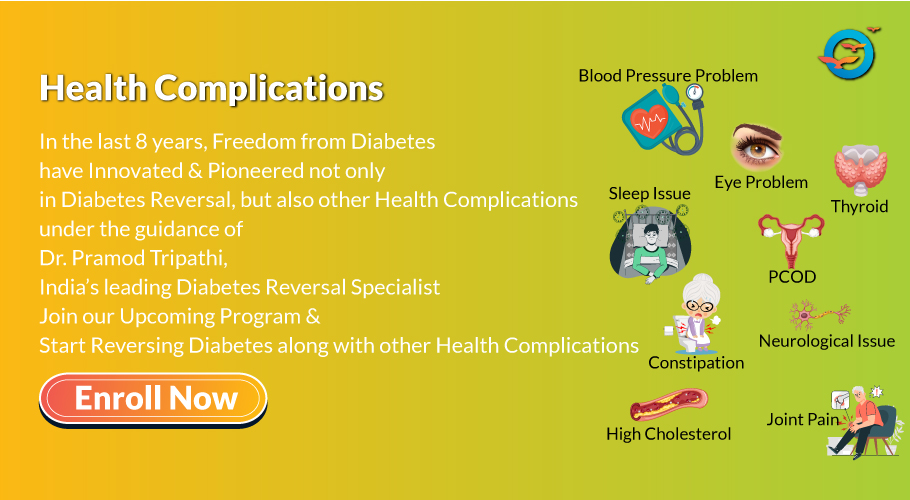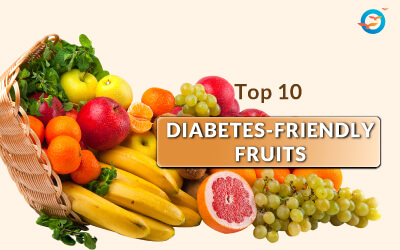5 Ways to Lower Cholesterol Without Medication

Cholesterol is a waxy-textured substance produced by the body to perform many essential functions, for instance: to make cell membranes, produce certain hormones, and Vitamin D. But like so many good things, cholesterol too is harmful in excess.
Cholesterol comes in two basic varieties:
- High-Density Lipoprotein (HDL)
HDL is described as “good” cholesterol as it transports cholesterol to your liver where it is eliminated as waste before it has a chance to build up.
- Low-Density Lipoprotein (LDL).
Whereas, LDL carries cholesterol directly to your arteries, where it accumulates and forms hard deposits on arterial walls, hardening and narrowing the arteries, hence its description as “bad” cholesterol. While high cholesterol levels may not show symptoms in early stages, it does increase the risks of heart disease and strokes.
Your doctor may prescribe certain medications, like statins, to lower your cholesterol; but there are possible side effects like headaches, nausea, etc. This article explores five natural ways that many have successfully used to lower cholesterol without resorting to medicines.
Natural ways to reduce cholesterol
1. Rethink Your Diet
Unhealthy diets are the primary cause of high cholesterol. Urbanization has brought many dietary conveniences that are compromising our health in several ways. High nitrites, salt, sugar, trans fats, saturated fat, animal dairy, and dairy products…all these are responsible for the rising incidences of cholesterol-related problems. Your body is fully capable of producing all the cholesterol it needs in the liver. This means the excess is what you put into your body via your diet.
The best thing you can do for your health is to switch to a heart-healthy diet. This means avoiding foods containing saturated and trans fats, I.e. treats like cakes and confectionery in general, fast food—especially the fried variety, candies, cream-filled snacks, ice-creams, milk and dairy products, potato chips, etc. You may think dairy milk is healthy, but whole milk contains between 3.5% and 5% fat; it’s worse with butter (~70%); clarified butter, aka cheese, is 100% fat! Fat is calorically twice as dense as carbohydrate and protein, so cutting out milk and milk products is a good way to start dropping your cholesterol levels
2. Exercise
There is an indubitable link between exercise and healthy cholesterol levels—it is known to lower LDL and increase HDL. Exercise provides a whole range of health benefits, too, from lowering BP to reducing blood glucose levels. Globally, health departments recommend getting up to five hours of moderate-intensity exercise a week to stay healthy.
While walking is a good activity, try to add a mix of cardio, resistance, and flexibility exercises into your routine. There are many options for each, from jogging, swimming, dancing, running, etc. for cardio to calisthenics, weights, bands, etc. for resistance training, and yoga, tai-chi, Pilates, etc. for flexibility and balance.
3. Lose Weight
For every extra pound you carry, your body produces a couple of extra milligrams of cholesterol. Every Day! Being overweight affects the way your body produces and uses lipoproteins and triglycerides. Triglycerides are a lipid (fatty substance) your body needs but only in tiny amounts.
Excessive triglycerides increase the amount of free fatty acids carried to the liver; it can make you insulin resistant (which further increases the free fatty acids in your liver) and it increases inflammation in the body, which affects the body’s ability to produce and manage good cholesterol—HDL.
Being overweight or obese raises your odds of high cholesterol affects the way your body makes and manages lipoproteins, including cholesterol and triglycerides—another fatty substance (or lipid) your body needs in small amounts.
When you lose weight it reduces the fat in your body; lowers inflammation, helps reverse insulin resistance, and enables the body to properly regulate hormones and lipoproteins. Medical research shows that losing just 5% of your body weight significantly reduces LDL, total cholesterol, and triglycerides.
Introducing healthy, nutrient-dense foods into your diet, cutting out excessively salty, sweet, and oily foods, portion control and exercise will help you reduce your body weight and improve your cholesterol levels.
4. Natural Supplements
- Garlic
Garlic is a common and popular ingredient in almost every kitchen. Its distinctive pungency adds flavor to our dishes. But beyond its gastronomic features, garlic is also a great cholesterol buster. Research suggests that consuming garlic regularly can lower BP, and cholesterol levels and stop or slow down atherosclerosis. Garlic can be had raw, cooked, or as a supplement.
- Flax seeds
Flaxseed has a mild, crunchy, and nutty flavor that makes it a popular ingredient in many recipes from morning smoothies, to burgers to pancakes. Flaxseeds are loaded with ingredients, but one that stands out for its cholesterol-busting properties is Omega-3 Fatty Acid, an alpha-linoleic acid (ALA) that is very good for heart health.
ALA reduces inflammation and stops cholesterol buildup on artery walls. Research studies indicate that regular consumption of ALA can decrease cholesterol levels and reduce the risk of ischemic cardiac disease (from narrow arteries), and type 2 diabetes.
- Soluble Fiber
Soluble fiber is the medium your body uses to improve its digestive function. It absorbs water to form a gel-like substance that lowers LDL and improves heart health in general. You can get soluble fiber into your diet from foods like fruits and vegetables, whole grains, legumes, beans, etc. Overconsumption of fiber can lead to constipation, though; so, introduce it into your diet gradually.
5. Stop Smoking
Smoking is universally acknowledged to be bad for health. And if you’re suffering from cholesterol problems, it’s worse… it hits you with a double whammy. Research shows that smoking raises LDL (bad) cholesterol levels and lowers HDL (good) cholesterol. If that weren’t enough, smoking also compromises the efficacy of statins (cholesterol controlling medicines).
Another negative factor is that smoking damages the blood vessel lining, which further increases the risk of heart attacks and stroke. The good news is that if one stops smoking for as little as 6 weeks, HDL levels go up, blood vessel health improves, and the risk of heart disease goes down.
In Conclusion
Cholesterol is both good and bad. LDL, aka, bad cholesterol leads to arterial plaque, hardening, and narrowing of the arteries, with the risk of heart attack and stroke. HDL, aka, good cholesterol is carried to the liver where it is processed and removed from the blood. The body produces sufficient cholesterol for its own needs. When we adopt unhealthy lifestyle habits—unhealthy diets, insufficient exercise, ignoring stress—we raise cholesterol levels in our own bodies.
While there are medications, called statins, to control cholesterol, they often have side effects that can be avoided with holistic treatments, like adopting heart-healthy food, getting sufficient exercise, reducing stress, and losing excess weight, among others. FFD’s Holistic Transformation Program, which is built on four protocols of diet, exercise, stress management, and medical supervision, offers a guided, proven, step-by-step route to getting your entire system back to good health. For more information, visit www.freedomfromdiabetes.org.


